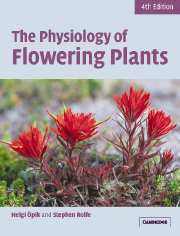Chapter 1 - Introduction
Published online by Cambridge University Press: 05 June 2012
Summary
Appreciating plants
During a public open day at a university, a child trying to look at a botanical exhibit was dragged away by an impatient parent with the words ‘Come on – we can't spend all day looking at dull green things!’
There is a tendency to consider plants as somewhat dull, passive and inactive. Yet plants face and overcome the same problems as animals: how to obtain nutrients and water, how to survive extreme environmental conditions, how to ensure reproduction and the survival of the next generation. The photosynthetic mode of life has conditioned plants to evolve as sessile organisms; their basic necessities – light, carbon dioxide, water and mineral ions – are ubiquitous and there has therefore been no selection pressure for mobility. An animal may obtain its nutrients and water by skilfully stalking its prey, and learning the path to a pool; this catches human attention as interesting behaviour. A flowering plant obtains nutrients and water by millions of minute root tips constantly growing through the soil, and by pumping ions across root cell plasma membranes with molecular-sized pumps. This is plant behaviour: plant physiology is plant behaviour. It need not be considered dull because it is less spectacular to the eye than what is called animal behaviour. The subsequent hauling up of the absorbed water and minerals to the top of a tree, 100 metres high, might indeed be considered a quite spectacular feat (imagine doing it with a bucket!).
- Type
- Chapter
- Information
- The Physiology of Flowering Plants , pp. 1 - 6Publisher: Cambridge University PressPrint publication year: 2005



